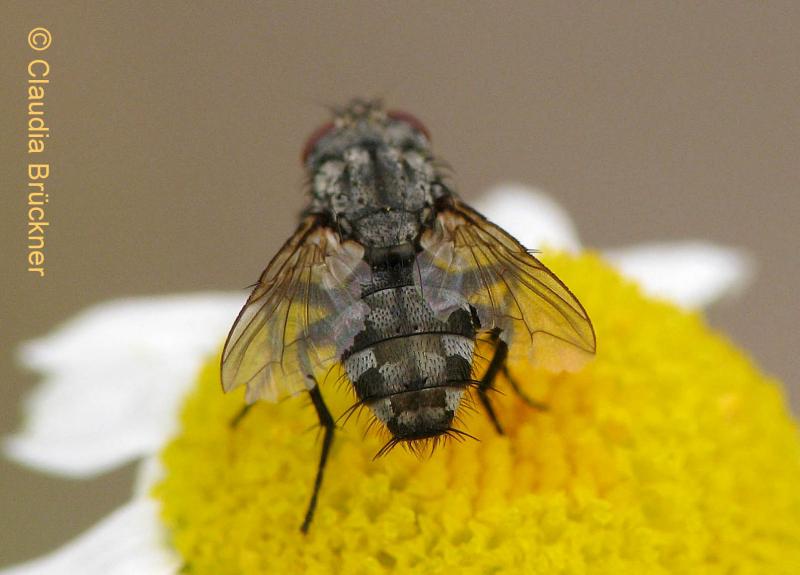
The flesh flies (family Sarcophagidae) comprise three subfamilies Sarcophaginae, Miltograminae and Paramacronychiinae. Species of the Sarcophaginae commonly complete their larval development on live or dead animals and humans, but the group has a widely varied biology. Sarcophaga is a cosmopolitan genus that breeds in carrion, dung and the wounds of living animals (Zumpt 1965, 1972; Coupland & Barker 2004). The larvae of Blaesophixa live parasitically in grasshoppers and locusts (Greathead, 1963). The subfamily is sufficiently important to man that, despite its relatively large size (e.g. Pape, 1996), it was taxonomically reviewed at an African level as early as 1972 (Zumpt 1972). It has received global taxonomic attention (Pape 1996).
Its importance comes from the involvement of its members in human and animal diseases (comprehensively reviewed for the Old World by Zumpt (1965)) and in forensic entomology (e.g. Villet et al. 2006). Several species are synanthropic and distributed beyond Africa, so that the family is of interest internationally as well as continentally. The identification of species within this family is most reliably based on examination of the characters of the male genitalia (e.g. Hall et al. 2009), although small external differences often occur, namely in the degree of white hairs on the head and in features of the thorax, legs, wing veins and abdomen (Zumpt 1975; Kirk-Spriggs et al. 2001). Females are essentially unidentifiable unless associated with males (Zumpt 1975). Identifying flesh flies is generally recognized as a difficult challenge because the group is rather uniform in its external morphology.






